The market-leading solution to transform employee engagement
Zero in on what your people really care about – and deliver world-class human experiences – with Qualtrics' holistic, employee engagement software. By capturing critical employee data from best in class survey designs and passive listening, organisations can make informed decisions that drive employee satisfaction, retention, and productivity.
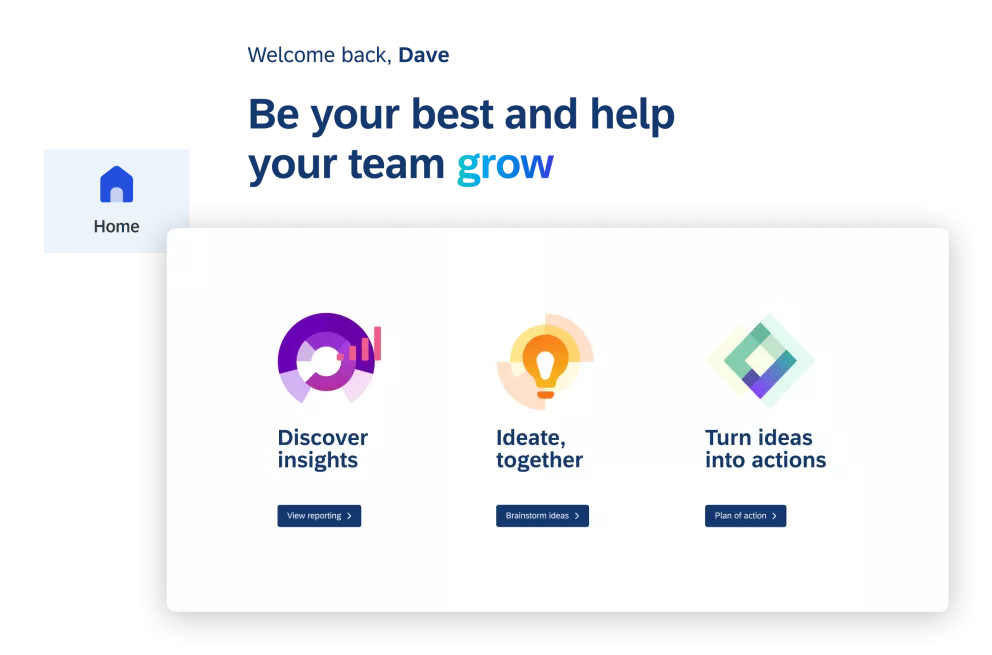
The world's
best brands
choose
Qualtrics
Today's reality
Disengaged employees
77% of employees who say they don’t have opportunities to grow and develop are disengaged
Missed expectations
66% of employees who say they are not supported to adapt to organisational changes say their experience is not meeting their expectations
Excluded
62% of employees who say leaders don't listen to feedback report negative feelings of inclusion
Qualtrics is the only provider to bring all XM disciplines together in one platform
- Get started with a guided setup featuring our science-backed approach to engagement measuring 5 critical KPIs: Engagement, Inclusion, Intent to Stay, Expectations and Wellbeing, including global and industry benchmarks to compare your results
- Create role-specific dashboards for HR teams and managers, offering a dedicated hub for team insights and personalised action recommendations
- Interactive Gen-AI simplifies employee experience results into tangible insights and generates AI-based, confidential comment summaries from open-text feedback.
Know what makes your people tick
Gather fast, actionable insights into employee sentiment and values – and avoid survey fatigue. Qualtrics’ Employee Pulse tools foster engagement, drive productivity, and boost retention, all with rich analysis and no-nonsense next steps.
- Capture employee sentiment instantly, allowing for agile responses to emerging concerns
- Tailor questions and adapt surveys to enhance engagement and yield deeper insights without fatigue
- Dive into key areas like well-being and diversity without separate programs, streamlining efforts
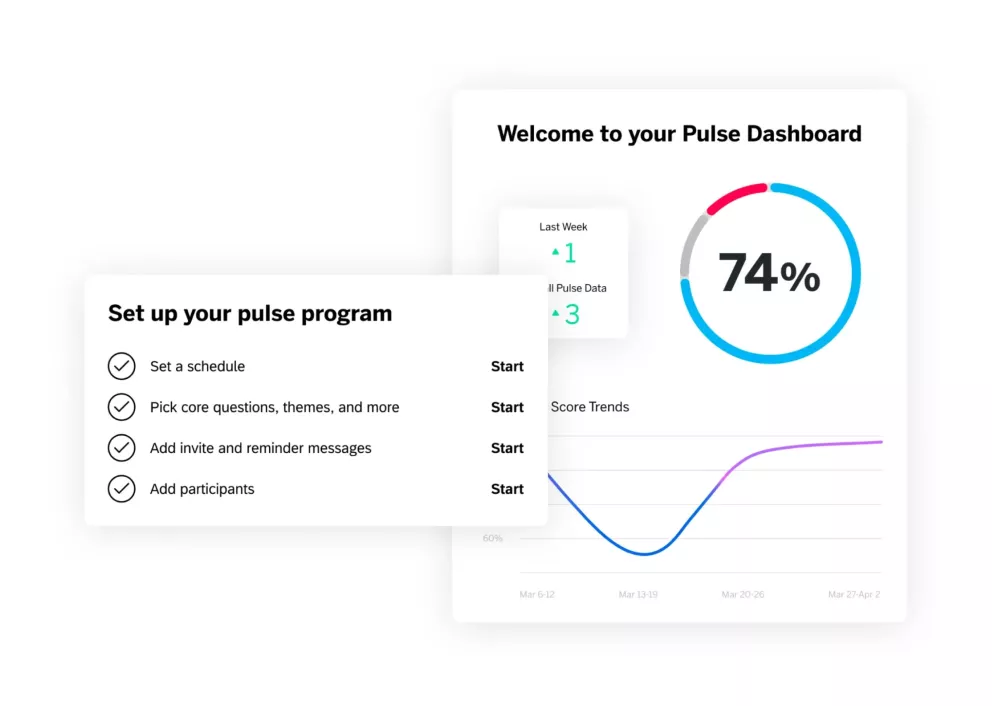
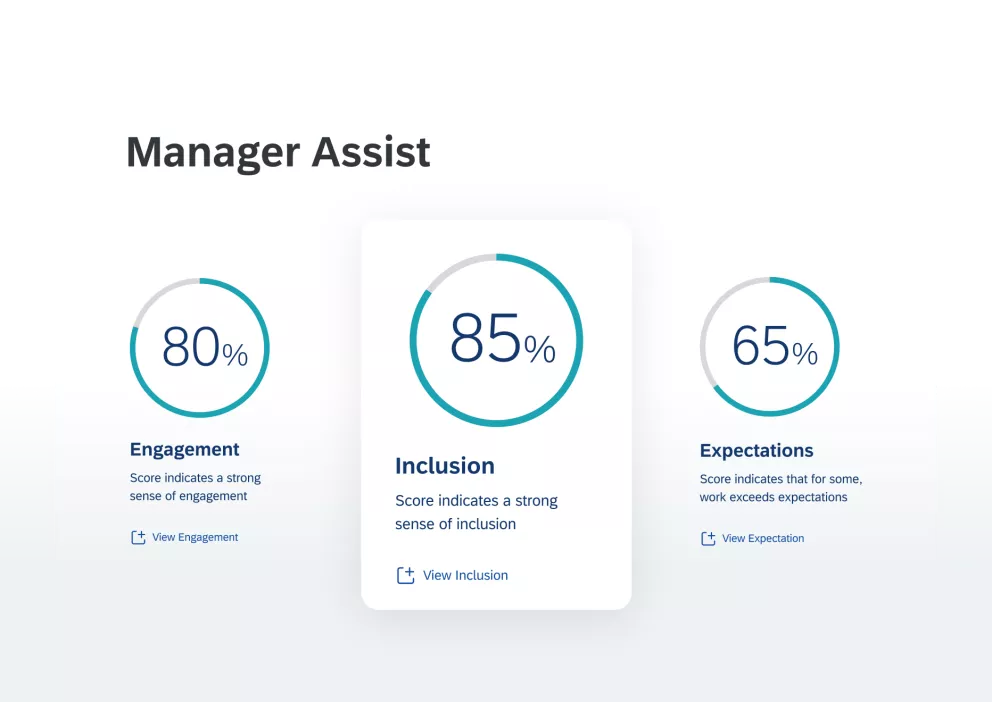
Capture comprehensive feedback and hear every voice
Gather continuous feedback, track emerging topics, and capture sentiment at scale with a holistic approach to employee engagement. With Qualtrics, you’ll capture, analyse, and delineate the employee experience from nose to tail – with engagement, well-being and inclusion monitored at every stage.
- Identify trending employee concerns instantly, allowing for timely interventions
- Measure engagement, well-being, and inclusion with intuitive dashboards for holistic insights
- Enable ongoing employee feedback collection across diverse teams to ensure every voice is heard.
Ebook
2025 Global Employee Experience Trends
Despite modernisation and the potential presented by AI — work feels harder and more chaotic than ever, say 35,000 employees. The reason? People are adapting faster than organisations. Whether intentional or not, leaders aren’t prioritising what empowers their employees, seemingly putting profit above all else.

Deepen understanding by focusing on the most impactful insights
Uncover experience gaps that help you walk a mile in your employees’ shoes – and learn what it’ll take to right the ship. Our real-time analysis keeps you focused on key areas for improvement, providing actionable insights that leaders can trust to drive effective change at every level.
- Instantly see performance gaps through intuitive real-time dashboards, enabling swift decision-making
- Transform feedback into targeted recommendations that align with your organisation’s goals
- Include employee journey data to understand pain points and enhance overall satisfaction across all stages.
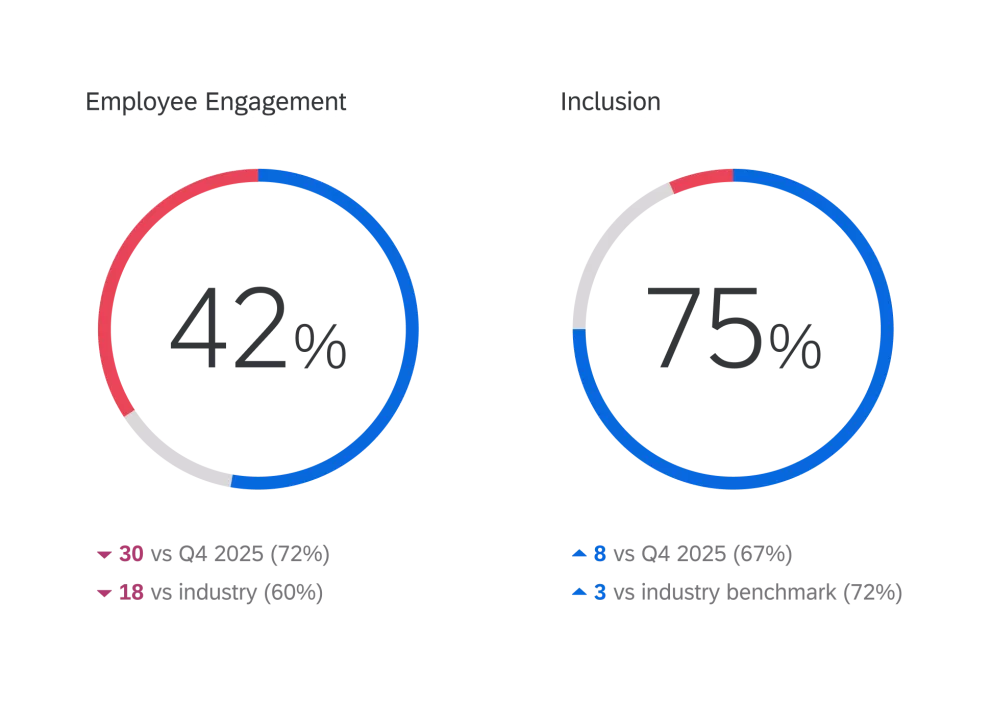
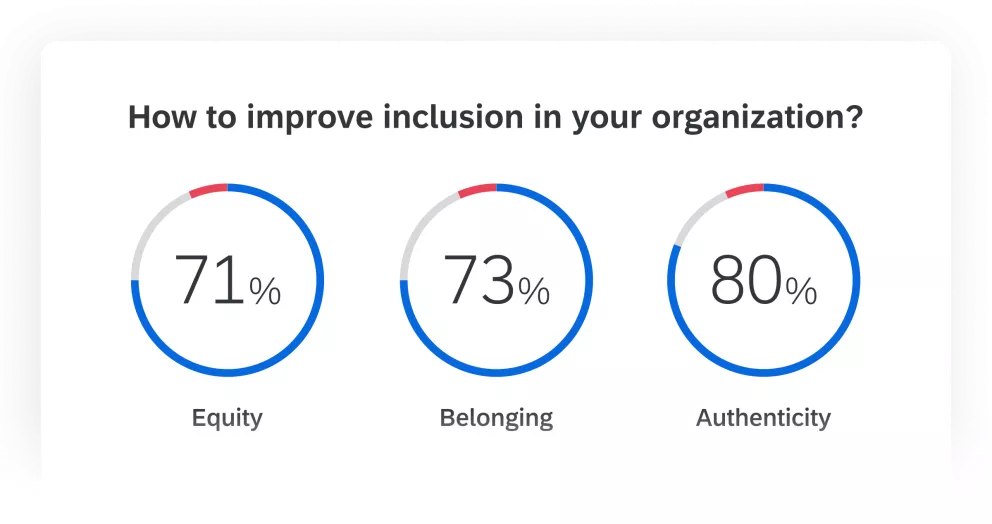
Unlock the power of employee insights
Gather and analyze employee feedback in order to gain a comprehensive understanding of their experiences and sentiments. Deploy tailored employee surveys of any type to capture meaningful insights, allowing your leaders to make data-driven decisions that positively impact employee engagement and retention.
- Tailor surveys to target specific employee experiences and targeted participation, ensuring relevant insights that drive meaningful actions
- Utilize advanced analytics to convert feedback into actionable recommendations, improving prompt responses to employee needs
- Instantly analyze confidential employee sentiment to identify trends, allowing organizations to act swiftly and effectively on securely-captured insight
How we are driving growth
How we are driving growth
Upgrade your programs with flexible, scalable plans
Upgrade your programs with flexible, scalable plans
Employee Engagement FAQs
What is employee engagement?
Employee engagement is a measure of someone’s attitude at work; how they think, feel and act towards helping their employer meet their goals. Employee engagement is a holistic way to measure employees’ feelings toward their employer and role. Employee engagement can take into account satisfaction, happiness and commitment to helping their employer reach its goals. Highly engaged employees, coupled with the right skill set and proper role leads to employees and companies meeting and exceeding their goals.
What is employee engagement software?
Employee engagement software (also referred to as employee engagement tools) empowers HR teams and people leaders to capture employee engagement data, uncover opportunities for new initiatives, measure the impact of manager action programs, and much more. It’s an essential part of an HR team’s toolkit.
What are the benefits of employee engagement software?
If you want to increase employee engagement, improve company culture and create high-performance teams, employee engagement software is vital. Employee engagement software helps HR teams and people leaders to gauge how employees feel in real time. Most platforms have the ability to conduct comprehensive employee engagement surveys, analyse the results and provide detailed action plans and recommendations. You can also track employee feedback to help structure performance reviews and wider evaluations. Employee engagement software is a proven driver of revenue, quality, productivity, and customer satisfaction. With only 30% of employees engaged in their work, it’s more important than ever to measure and improve engagement.
What are the key features of employee engagement software?
Most employee engagement tools will offer employee surveys, engagement analytics (such as overall employee satisfaction), listening capabilities to capture and measure feedback, and more. Sophisticated solutions go a step further and integrate predictive intelligence and machine learning to uncover insights from employee feedback and sentiment, surfacing key topics and trends for you to tackle. As well as this, they’ll come with preconfigured dashboards, allowing teams to filter and personalise engagement data for specific managers and/or teams.
How do I choose the right employee engagement tool?
To choose the right employee engagement tool, assess your organisation's needs by identifying specific goals such as communication, feedback, or recognition. Evaluate user-friendliness and integration with existing systems. Consider features like analytics, customisation, and mobile access. Gather input from employees to ensure buy-in and success. Finally, review vendor support and pricing options to ensure they fit your budget and expectations. A pilot test can also provide insights before a full rollout. That’s where we come in. With Qualtrics XM for Employee Experience, we make it easy for you to figure out which levers to pull to increase employee engagement — and we do it in real-time.
